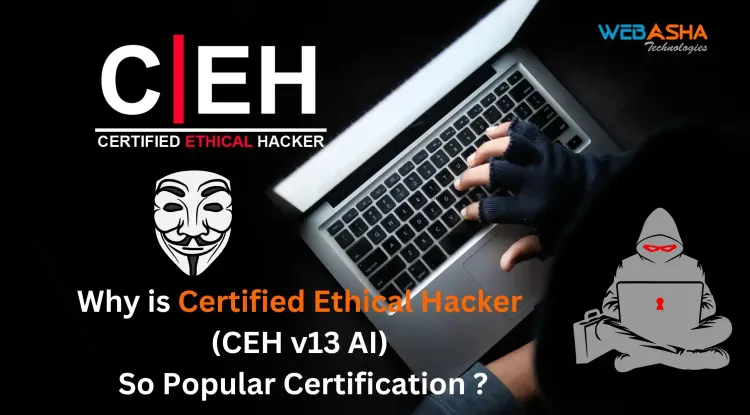VAPT vs CPENT | Why CPENT is Better then VAPT?
Discover the key differences between VAPT (Vulnerability Assessment & Penetration Testing) and CPENT (Certified Penetration Testing Professional). Learn why CPENT is the superior choice for penetration testers, offering real-world attack simulations, advanced cybersecurity techniques, and higher career growth potential.

Introduction
In today’s evolving cybersecurity landscape, organizations are increasingly vulnerable to cyber threats. To safeguard digital assets, security professionals rely on Vulnerability Assessment & Penetration Testing (VAPT) and Certified Penetration Testing Professional (CPENT) techniques. While both play an essential role in identifying and mitigating security threats, CPENT offers more advanced skills and real-world simulation, making it the superior choice for penetration testers and red teamers.
This article provides an in-depth comparison between VAPT and CPENT, highlighting their differences, methodologies, real-world applications, and why CPENT stands out as the better choice for cybersecurity professionals.
Understanding VAPT
What is VAPT?
Vulnerability Assessment and Penetration Testing (VAPT) is a security testing approach that evaluates the security of applications, networks, and systems. It comprises two key components:
-
Vulnerability Assessment (VA) – Focuses on identifying security vulnerabilities using automated tools.
-
Penetration Testing (PT) – Simulates cyberattacks to exploit vulnerabilities and assess security risks.
Key Features of VAPT:
-
Identifies weaknesses in an organization’s security posture.
-
Uses both automated scanning tools and manual testing.
-
Evaluates applications, networks, and system vulnerabilities.
-
Provides remediation recommendations to mitigate security risks.
Tools Used in VAPT:
-
Automated Scanners: Nessus, OpenVAS, Qualys, Acunetix
-
Penetration Testing Tools: Metasploit, Burp Suite, Nmap, Wireshark
Limitations of VAPT:
-
Mostly Automated: Heavily relies on automated tools, limiting manual exploitation.
-
Limited Practical Experience: Lacks hands-on real-world attack scenarios.
-
Not Comprehensive: Doesn’t always provide deep insights into multi-layered network security.
-
Compliance-Driven: Often conducted to meet regulatory compliance rather than for advanced threat simulation.
Best Use Cases for VAPT:
-
Organizations seeking to assess their security vulnerabilities.
-
Businesses preparing for compliance audits.
-
Entry-level security professionals looking to gain foundational knowledge in cybersecurity testing.
Understanding CPENT
What is CPENT?
Certified Penetration Testing Professional (CPENT) is an EC-Council certification designed for advanced penetration testers. Unlike VAPT, CPENT focuses on real-world, hands-on security testing where candidates perform live penetration tests on simulated enterprise environments.
Key Features of CPENT:
-
Live Attack Simulations: Testers exploit vulnerabilities in real-time.
-
Multi-Layered Network Exploitation: Assess security across multiple network perimeters.
-
Pivoting & Lateral Movement: Move deeper into compromised networks.
-
Advanced Techniques: Includes binary exploitation, IoT security, and cloud penetration testing.
-
Red Teaming Focus: Hands-on experience with adversarial attack simulation.
Tools Used in CPENT:
-
Operating Systems: Kali Linux, Parrot Security OS
-
Exploitation Frameworks: Metasploit, Cobalt Strike, Empire
-
Network Analysis: Wireshark, TCPDump, BloodHound
-
Advanced Exploitation: Burp Suite Pro, ExploitDB, SQLmap
Best Use Cases for CPENT:
-
Cybersecurity professionals seeking advanced penetration testing skills.
-
Organizations needing red team and offensive security expertise.
-
Security researchers working on real-world exploit development.
Key Differences Between VAPT & CPENT
| Feature | VAPT | CPENT |
|---|---|---|
| Focus | Identifies vulnerabilities & basic testing | Hands-on, real-world penetration testing |
| Methodology | Mostly automated tools | Manual exploitation & advanced tactics |
| Practical Experience | Limited | High (Live attack simulations) |
| Cloud & IoT Security | Rarely covered | Included |
| Pivoting & Network Exploitation | Basic | Advanced multi-layer pivoting |
| Red Teaming Concepts | Minimal | Fully integrated |
| Industry Demand | High | Higher due to advanced expertise |
| Certification Exam | Mostly multiple-choice or tool-based( Not Globaly Recognised) | Real-world, live 24-hour challenge |
Theoretical vs. Practical Approach
-
VAPT is heavily reliant on automated tools and theoretical knowledge.
-
CPENT requires real-world attack simulation, manual exploitation, and strategic pivoting techniques.
Level of Expertise Required
-
VAPT is entry to mid-level, ideal for beginners.
-
CPENT is for advanced penetration testers and red team members.
Coverage of Modern Cybersecurity Threats
-
VAPT focuses on compliance and basic vulnerability scanning.
-
CPENT covers modern attack vectors, including cloud security, IoT hacking, and advanced privilege escalation techniques.
Why CPENT is Better Than VAPT
1. Hands-on Real-World Experience
Unlike VAPT, which often relies on automated scanners and tool-based assessments, CPENT is designed for real-world attack simulation. Candidates perform live penetration tests, mimicking actual cyberattacks.
2. Advanced Penetration Testing Techniques
CPENT focuses on multi-perimeter penetration testing, advanced pivoting, and red teaming techniques, making it far superior to VAPT in practical penetration testing skills.
3. Higher Industry Recognition & Career Growth
Organizations prefer CPENT-certified professionals because they can execute advanced penetration testing techniques beyond the scope of traditional VAPT.
4. Higher Salary Potential
-
VAPT professionals typically earn $50,000 - $90,000 per year.
-
CPENT-certified professionals can earn $90,000 - $150,000+ per year, depending on expertise.
Who Should Choose CPENT Over VAPT?
Beginners in Cybersecurity:
-
If you're new to security testing, start with VAPT for basic vulnerability identification and compliance testing.
Intermediate Security Professionals:
-
If you want to move beyond basic vulnerability scanning, CPENT provides advanced penetration testing skills.
Experienced Penetration Testers:
-
If you're already familiar with basic penetration testing, CPENT will sharpen your expertise in advanced red teaming techniques.
Red Team & Offensive Security Experts:
-
If you work in offensive security, CPENT is the perfect choice to gain expertise in pivoting, multi-perimeter attacks, and advanced exploitation.
Conclusion
VAPT is a Good Starting Point, but CPENT is the Ultimate Goal!
Both VAPT and CPENT play an essential role in cybersecurity. However, CPENT is the superior choice for those who want real-world penetration testing experience and advanced cybersecurity expertise.
Why Choose CPENT?
✅ Hands-on, real-world cybersecurity testing
✅ Comprehensive coverage of modern attack vectors
✅ Higher industry recognition and salary growth
✅ Preferred by top employers and cybersecurity firms
Thinking about CPENT? Take the next step in your cybersecurity career today!
FAQ
1. What is VAPT?
VAPT (Vulnerability Assessment and Penetration Testing) is a cybersecurity testing approach that identifies vulnerabilities in systems and applications and simulates real-world attacks to assess security risks.
2. What is CPENT?
CPENT (Certified Penetration Testing Professional) is an advanced penetration testing certification from EC-Council that focuses on real-world attack simulations, multi-layered security testing, and red teaming techniques.
3. How does VAPT differ from CPENT?
VAPT focuses on identifying vulnerabilities using automated tools and basic penetration testing, while CPENT is a hands-on, real-world penetration testing certification that requires advanced exploitation techniques.
4. Which one is more practical, VAPT or CPENT?
CPENT is more practical as it involves live penetration testing in simulated environments, whereas VAPT relies more on automated tools and basic testing methods.
5. Is CPENT better than VAPT for career growth?
Yes, CPENT offers higher career growth opportunities because it covers advanced penetration testing, multi-perimeter network exploitation, and red teaming, making it highly valued by top cybersecurity firms.
6. Can CPENT-certified professionals perform VAPT assessments?
Yes, CPENT-certified professionals have the skills to perform VAPT assessments, but they can also conduct more advanced penetration tests beyond VAPT’s scope.
7. What are the limitations of VAPT?
VAPT is often compliance-driven, heavily dependent on automated tools, lacks real-world attack simulation, and provides limited insights into multi-layered security threats.
8. What are the benefits of CPENT over VAPT?
CPENT provides real-world attack simulations, advanced exploitation techniques, IoT security testing, pivoting, lateral movement, cloud security assessments, and binary exploitation—none of which are covered in VAPT.
9. Is CPENT recognized by employers?
Yes, CPENT is widely recognized by top cybersecurity firms, penetration testing companies, and red teams, making it a preferred certification for advanced security roles.
10. Does CPENT include red teaming techniques?
Yes, CPENT includes red teaming concepts, adversarial attack simulations, and strategic penetration testing methodologies, making it superior to VAPT.
11. What tools are commonly used in VAPT?
VAPT professionals use tools like Nessus, OpenVAS, Burp Suite, Metasploit, Acunetix, Qualys, and Nmap for vulnerability scanning and penetration testing.
12. What tools are used in CPENT?
CPENT professionals use advanced tools such as Cobalt Strike, Empire, Metasploit, Wireshark, Burp Suite Pro, BloodHound, SQLmap, and ExploitDB for real-world exploitation.
13. Who should choose VAPT?
VAPT is ideal for beginners in cybersecurity, organizations conducting compliance-based security testing, and businesses looking for basic vulnerability assessments.
14. Who should choose CPENT?
CPENT is best for experienced penetration testers, red team professionals, ethical hackers, security consultants, and those looking to master advanced offensive security techniques.
15. What is the salary difference between VAPT and CPENT professionals?
-
VAPT professionals typically earn $50,000 - $90,000 per year.
-
CPENT-certified professionals can earn $90,000 - $150,000+ per year, depending on their expertise and role.
16. Is CPENT an entry-level certification?
No, CPENT is an advanced certification designed for professionals with prior experience in penetration testing and cybersecurity.
17. Can I get a job with just VAPT skills?
Yes, but VAPT is often considered an entry-level skill. Advanced penetration testing roles typically require hands-on experience like CPENT.
18. What industries require CPENT professionals?
Industries like banking, healthcare, government, technology, e-commerce, and defense hire CPENT professionals for high-level cybersecurity roles.
19. Is CPENT difficult compared to VAPT?
Yes, CPENT is challenging as it requires hands-on practical assessments, real-world attack simulations, and advanced cybersecurity knowledge, unlike VAPT, which mostly involves automated scanning.
20. Why should I choose CPENT over VAPT?
CPENT is the ultimate choice if you want to become an elite penetration tester with real-world attack experience, advanced cybersecurity skills, and better career prospects in ethical hacking.












![Top 10 Ethical Hackers in the World [2025]](https://www.webasha.com/blog/uploads/images/202408/image_100x75_66c2f983c207b.webp)

![[2025] Top 100+ VAPT Interview Questions and Answers](https://www.webasha.com/blog/uploads/images/image_100x75_6512b1e4b64f7.jpg)








